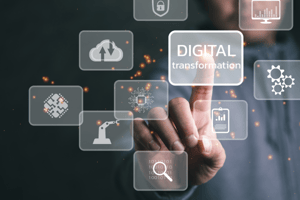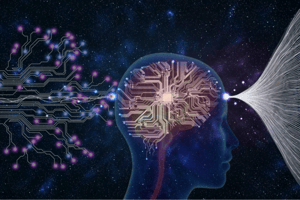simulation process modeling rapid process discovery
How to have 20/20 foresight. Building your organization's resilience for the next global crisis.
"Hindsight is 20/20" is a phrase that carries a certain irony given what a year 2020 was. On Monday, March 9, 2020, the US went into lockdown. And sometime around then, so did most of the world. Air travel essentially ground to a halt, at least for commercial travel. Everyone who could work from home did. Restaurants, theaters, and movie theaters were all closed. Film and TV production stopped. The world, as we knew it on March 8, 2020, pressed a huge pause button.
Organizations scrambled. Some already had workers with laptops who were able to work remotely, but many didn't. And even if they had the technology to enable people to work remotely, that isn't how they had set up their processes. Lockdown impacted every aspect of personal and professional life for every person in the world. Supply chains were disrupted, and healthcare systems were thrown into chaos with the massive influx of patients and a lack of critical resources.
Now with our 20/20 hindsight, we can see very clearly that the human race was completely caught off-guard and unprepared. But should we have been? And more importantly, have we learned our lessons? Are we going to be better prepared next time? Because the odds are, whether it's another pandemic, a climate-related crisis, or something else, there will be a next time. The World Bank has said, "In the wake of COVID-19, there have been calls for the world to be better prepared for the next pandemic. …Such calls have been made in the past and have resulted in meaningful action. Yet, the world tends to move on quickly, with new crises taking center stage, resulting in the now familiar cycle of "panic and neglect."
How were organizations caught so on the back foot? There had been warning bells rung previously. In 2006, there were serious concerns that Avian Flu could turn into a pandemic, and questions were asked about how "managers can map out their companies' vulnerabilities."
Back in 2020, at the height of the COVID-19 pandemic, BusinessOptix noted, "As the widescale disruption of 2020 shows no signs of abating, it's clear that we haven't been asking 'what if' enough. The habit of simulating potential situations using scenario modeling technology must become more prevalent across all industries." Our blog piece said, "To help aid decision-making, businesses must be able to create and iteratively model a range of options to help them gain insight into the potential impact of their choices. It's this tantalizing prospect of turning hindsight into foresight that means 'what-if' analysis and scenario modeling are becoming more important within a broader variety of disciplines. From micro to macro factors affecting your business, scenario-modeling can become an every-day business activity that can inform a broad range of business decisions and strategies."
This blog was right then, and it's right now. How many organizations have learned the lessons of 2020 and begun simulations and scenario modeling to ensure they're resilient enough to survive the next global crisis? Yes, most companies already engage in some modeling. But this is usually financial modeling and not scenario modeling of how fit for purpose an organization and its processes are to weather a variety of potential storms.
Does your organization have a Business Process Management system that can help you prepare for the unexpected and assess the effectiveness of the proposed change? BusinessOptix simulation and scenario modeling software can map out multiple possible views of the future, creating multiple alternative digital realities based on a unique set of assumptions that you can change or duplicate at the click of a button. Through building multiple different scenarios, your organization can plan for an endless range of possibilities, developing potentially limitless risk management strategies. And scenario modeling and simulation aren't just about being better prepared for worst-case situations. It also enables you to identify and compare opportunities to improve and optimize your current processes.
- BusinessOptix process discovery and mapping enable you to understand your organization's current state.
- Model future options and ideas such as creating a standardized process that has several versions in the organization, taking steps out of a process, or increasing resources to complete specific activities
- Run simulations to compare options and evaluate what will have the most positive impact
- Using this information to inform decisions, scenario modeling can deliver insights into needed adjustments and their potential impact.
- Implement the preferred option, including documentation and guided work instructions to ensure the organization executes the plan
- Continuous Improvement: After releasing the new process into production, the BusinessOptix platform allows you to compare the actual results with those that were predicted during the simulation. Use tools like process mining to feed data into your models to continue to improve your processes incrementally.
Cast your mind back to March 2020. The chaos, the confusion, the uncertainty. Don't you wish you'd had an opportunity before that point to stress test your organization against multiple possible scenarios so that you were confident in its resiliency when the pandemic hit? Well, now you have that opportunity.



